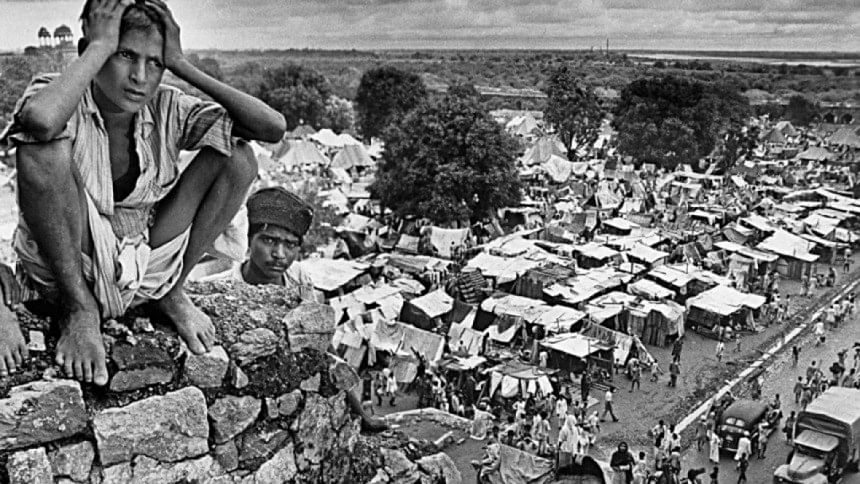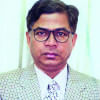74 Years Since Partition: Sectarian obstinacy and the Partition of 1947

For a significant number of people, including those who had ventured to understand the causes of the historic Partition of the Indian subcontinent in 1947, the Indian Muslim psyche and the supportive separatist politics of that community (propounded and pursued by the Muslim League) were predominantly instrumental in the territorial divide along communal lines. However, it is important to also discuss the political ideology and tactics of the numerically dominant community who were in no small measure responsible for the hugely unsettling Partition as well.
From a historical perspective, it can be seen that in the late 19th and early 20th centuries, the Indian political scene was dominated by mainly Hindu politicians. On the crucial question of mobilising Muslims, the Congress demand for elected councils was not liked by prominent Muslim leaders owing to the fear of Hindu majority rule. The Hindu dominated Congress leadership were not particularly concerned about these apprehensions, as no rival Muslim political organisation came into being until 1906.
In From Plassey to Partition: A History of Modern India, Sekhar Bandyopadhyay wrote that the Hindu revivalism of the 19th century was marked by "a conceptualisation of a glorious Hindu past, believed to have been degenerated under Muslim rule and threatened by the British". This revivalism had a strong political overtone, "dictated by the historical need of sculpting a modern Indian nation". The use of orthodox Hindu religious symbols for political mobilisation took a more militant form in North India through the Arya Samaj and the Cow Protection Movement, which led to widespread communal violence in 1893. According to Bandyopadhyay, "the Muslim practice of cow sacrifice at the Bakr-Id festival further increased Hindu veneration of the cow as a sacred symbol", though in ancient times the cow was not regarded as sacred or inviolable. To the politician, "the cow question was merely a war cry to arouse the lethargic Hindus".
The increasing need for mobilisation along community lines marked by Hindu revivalism gradually became an established political force. In the late 19th and early 20th centuries, nationalism came to be associated with Hindu religious revivalist ideas. Such developments inevitably led to the unhappy consequence of alienating Muslims, who became suspicious of Hindu majority rule.
Political programmes naturally necessitated mass mobilisation and religion was seen as a means to reach the masses. Hindu religious revivalism, therefore, was a main feature of the then emerging politics. The Bhagavad Gita became a source of spiritual inspiration for "Swadeshi" volunteers and Hindu religious symbols and imagery were frequently used. This quite clearly alienated the Muslims, who felt that the Hindu religion was expected to become the bond of unity for the whole nation.
It is significant to note that mainstream Indian nationalism under the stewardship of the Indian National Congress could not maintain its separation from the blooming Hindu nationalism. Interestingly enough, the Muslims, by no means a homogeneous community with a visible political opinion in the late 19th century, had sectarian differences, linguistic barriers and economic disparities. It was the colonial authorities who largely helped the Muslims in building an image of a homogeneous "religio-political community". As Mushirul Hasan explains in Contesting the Nation: Religion, Community and the Politics of Democracy in India, many Muslims "began to see themselves in the colonial image of being unified, cohesive, and segregated from the Hindus", and the efforts to homogenise started to construct a Muslim community identity that was later "enlarged into Muslim nationhood".
The Muslim political leaders largely influenced by the "Ulama" rediscovered the inspiration of Islam as a mobilising force. This resulted in a gradual Islamisation of Muslim politics. They demanded an All India Muslim University as a cultural centre of Pan-Indian Islam. The older Muslim leaders and the colonial bureaucracy felt the urgent need for a political organisation for mobilising the Muslim community against the Congress, and also to offer an independent political platform. A clear shift of emphasis from community based on common descent, to a community based on allegiance, to a common faith, became noticeable. Added to this was a fear of the Hindu nationalist demand of annulment of the partition of Bengal, to the disadvantage of Bengali Muslims.
In such circumstances, at the Dacca Educational Conference on December 30, 1906, a new party by the nomenclature of All India Muslim League was launched to safeguard the political rights and interests of Muslims. At this point, the majority of educated Muslims had already decided to tread a different path, quite distinct from the so-called nationalist agitation.
It would be relevant to recollect here that the Morley-Minto Reforms of 1909 provided for reserved seats for Muslims in imperial and provincial legislatures. The granting of a separate electorate provided an official legitimacy to their minority status and the separate political identity of Indian Muslims, with the Muslim League representing its public face. However, according to Sekhar Bandyopadhyay, it was the resounding victory of the Indian National Congress that "gradually brought all… divergent groups together under the banner of a revived and revitalised Muslim League under the leadership of Jinnah".
Noted historian Joya Chatterji in Bengal Divided wrote that, in Bengal at least, the larger and powerful segment of Hindus preferred Partition to avoid being ruled by Muslims (in a similar vein to how many Muslims in other regions feared Hindu majority rule). To prevent this, Hindu leaders exhorted their fellow community members of Hindu majority districts to press for a separate state in the Indian Union. In Bengal, the Hindus created a distinct parallel separatist tone and the Bengal Congress successfully led the movement to divide their own province on a communal basis. Even the last ditch attempts of prominent leaders like Sarat Chandra Bose, KS Roy and HS Suhrawardy to create a united sovereign Bengal was deliberately foiled by the Bengal Congress, which was being aggressively prodded by the communal outfit of the Hindu Mahasabha.
The electoral arrangements introduced by the British colonial rulers in India in the 20th century, along with the Communal Award (which extended the separate electorate to Depressed Classes and other minorities), caused significant loss of political power and privileges hitherto exclusively enjoyed by the bhadralok (Hindu Bengali gentry). The emerging assertion of other political powers had to be challenged, and the spectre of Hindu communalism manifested as the most effective weapon. The irony is that the same quarter that waged an all-out movement and succeeded in unsettling the settled fact of the Partition of Bengal in 1911, succeeded once more in 1947, in playing an important role in the fateful Partition of the entire subcontinent.
Muhammad Nurul Huda is a former IGP of Bangladesh.

 For all latest news, follow The Daily Star's Google News channel.
For all latest news, follow The Daily Star's Google News channel. 



Comments